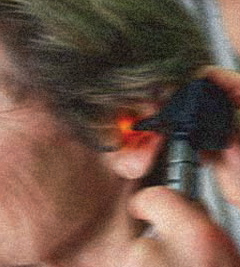
The sound entering the cochlea is identified by the vibration of tiny, hair-like cilia which extends from the cochlear hair cells. Now the outer hair cell amplifies the sound signal transforming into an electrical signal which moves to the brain’s auditory center. If this amplification was not there then it would become sensitive for hearing as the sound wave which enters the cochlea is severely diminished as it passes through the inner ear fluid.
Zuo and his colleagues have differentiated between two amplification theories called “stereociliary motility†and “somatic motility†which have been founded in the previous studies of the auditory machinery.
Jian Zuo, Ph.D., associate member of the St. Jude Department of Development Neurobiology said, “This motility is also called ‘dancing’ because when you electrically stimulate an outer hair cell with a sound, the cell body spontaneously elongates and contracts along with the sound. It is very dramatic to see these hair cells ‘dance’ with the soundâ€.
Zuo is also the senior author of a report on this work which has appeared in the May 8 issue of the journal “Neuronâ€.
As the prestin protein is a vital constituent of somatic motility, Zuo and his colleagues genetically took out prestin in mice and then tested the effects on hearing. The mice proved to show a hearing defect which indicates a malfunction of somatic motility. The knockout experiments were an indication for the role of somatic motility. The mice which were affected demonstrated structural abnormalities in their outer hair cells, said Zuo which has in a way complicated the interpretation.
The latest experiments have explicitly established the role of somatic motility. The researchers genetically changed the mice to have only subtle alterations in the prestin protein. These modifications only compromised of prestin’s function as an amplifier but didn’t affect the outer hair cell structure or function, the researchers’ analysis shows.
Zuo said, “We found that these mice showed exactly the same kinds of hearing deficiency as the previous knockout mice. Therefore, we believe that these experiments eliminate criticism of our earlier experiments with the knockout miceâ€.
Zuo noted, “With this study we still cannot really exclude stereociliary motility from contributing to cochlear amplification, because eliminating somatic motility also reduces ciliary motility. So, it is not possible to totally isolate either form of motility. In fact, we hypothesize that the two mechanisms might work together in different aspects of amplification.â€
Zuo said, “For example, an overdose of aspirin causes a high-frequency hearing loss by inhibiting prestin’s function. Also, there is evidence that many cases of high-frequency hearing loss are caused by defects in the cell’s molecular machinery that involves prestin. And two mutations that have been detected in the prestin gene in humans are reported to be associated with deafness.â€
Zuo and his colleagues are trying to make scientists understand prestin’s role in hearing and the mechanism of hearing loss in a better way .
